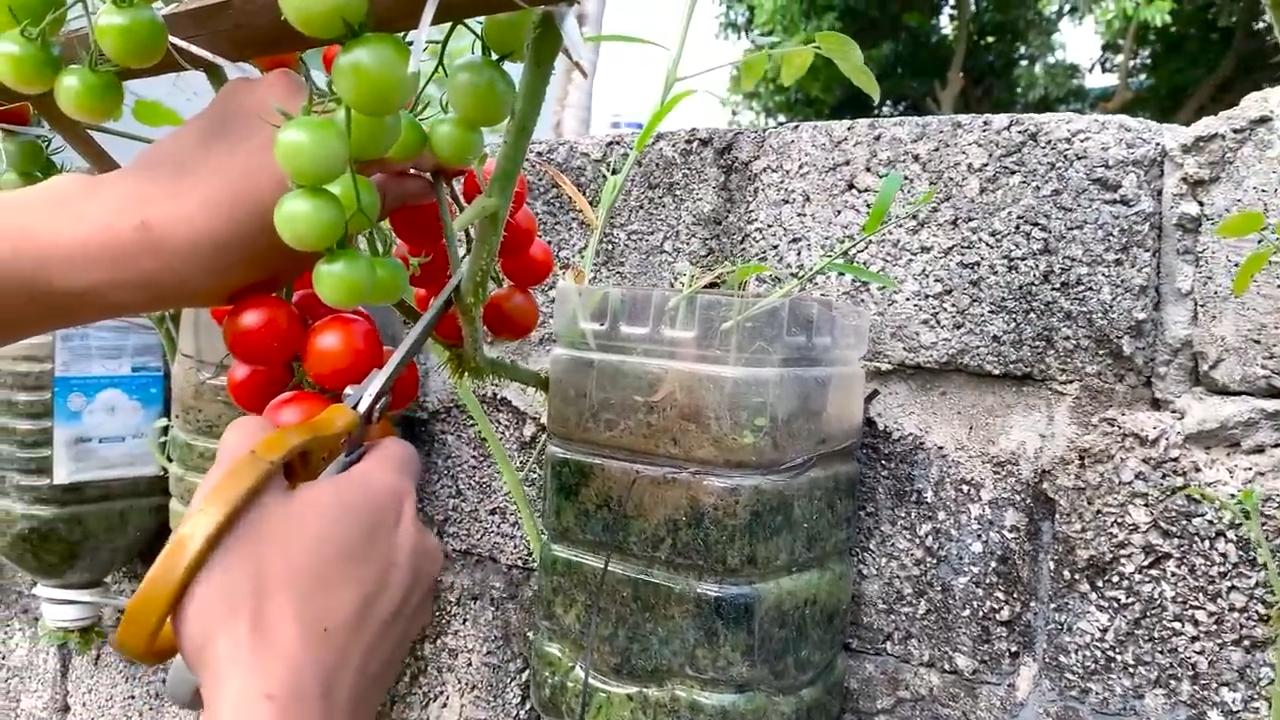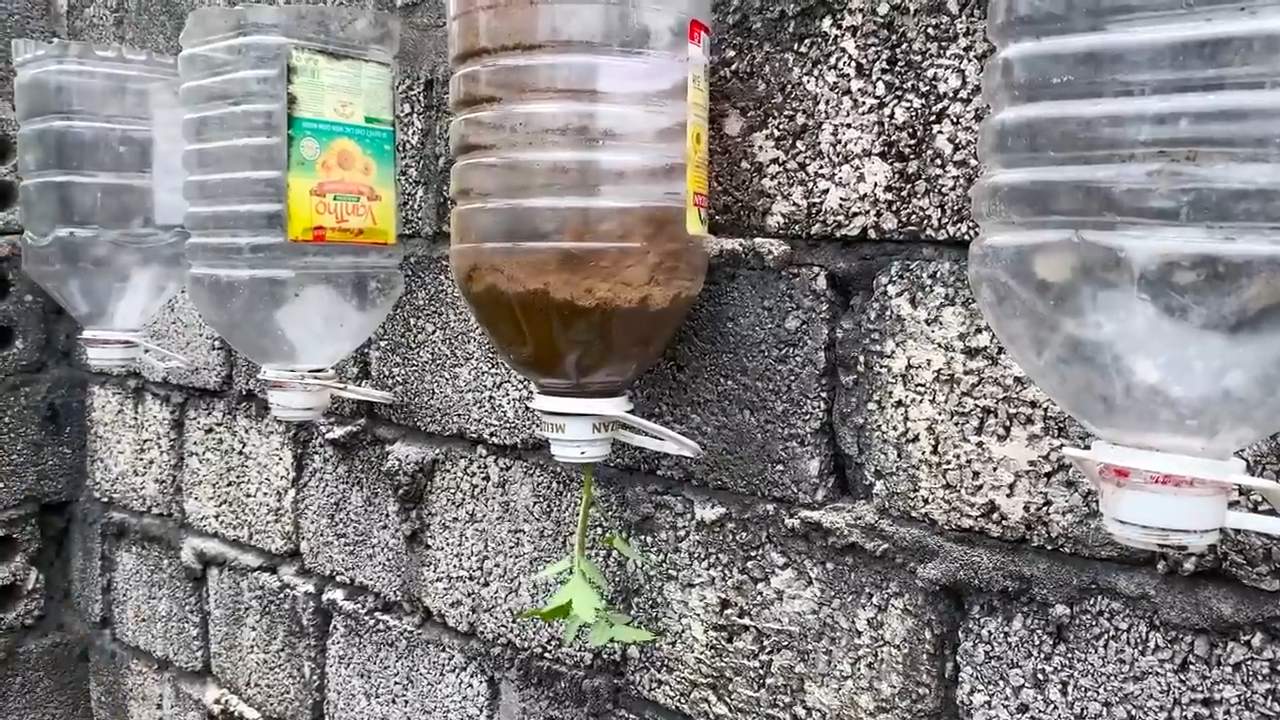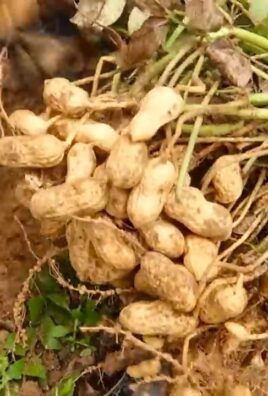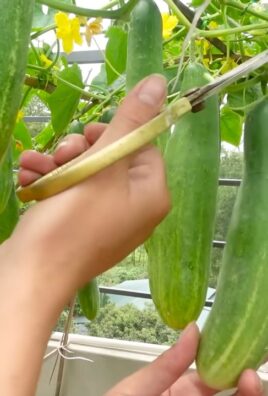Indoor Tomato Growing: Imagine plucking a sun-ripened, juicy tomato right from your own indoor garden, even in the dead of winter! Sounds like a dream, right? Well, it doesn’t have to be! For centuries, humans have cultivated plants indoors, from the elaborate hanging gardens of Babylon to the humble windowsill herb gardens of today. But growing tomatoes indoors? That’s where the real magic happens.
Let’s face it, store-bought tomatoes often lack that vibrant flavor we crave. They’re picked green and shipped miles, sacrificing taste for shelf life. That’s why mastering indoor tomato growing is a game-changer. You get to control the environment, ensuring the perfect conditions for sweet, flavorful fruit. Plus, it’s incredibly rewarding to nurture a plant from seed to harvest, all within the comfort of your home.
This DIY guide is packed with simple, effective tricks and hacks to help you succeed, whether you’re a seasoned gardener or a complete beginner. We’ll cover everything from choosing the right varieties and providing adequate light to troubleshooting common problems and maximizing your yield. Get ready to enjoy fresh, delicious tomatoes year-round – your taste buds (and your wallet) will thank you!

Grow Delicious Tomatoes Indoors: A Complete DIY Guide
Hey there, fellow gardening enthusiasts! Ever dreamt of biting into a juicy, sun-ripened tomato in the dead of winter? Well, dream no more! I’m going to walk you through a super fun and rewarding DIY project: growing tomatoes indoors. It’s easier than you think, and the taste of homegrown tomatoes, even indoors, is simply unbeatable.
Choosing the Right Tomato Variety
Before we dive into the nitty-gritty, let’s talk tomatoes. Not all varieties are created equal when it comes to indoor growing. We need to pick ones that are compact and well-suited for container gardening.
* Dwarf Varieties: These are your best bet! They stay small, typically under 3 feet, making them perfect for indoor spaces. Look for names like ‘Tiny Tim,’ ‘Red Robin,’ ‘Balcony Gardener,’ or ‘Patio Princess.’
* Determinate Varieties: These grow to a certain size and then produce all their fruit at once. They’re generally more manageable indoors than indeterminate varieties.
* Avoid Indeterminate Varieties: These guys are the climbers! They keep growing and producing fruit throughout the season, which means they need a lot of space and support – not ideal for indoors.
Gathering Your Supplies
Okay, now for the fun part – shopping! Here’s what you’ll need to get started:
* Tomato Seeds: Choose your dwarf or determinate variety. I always recommend buying from a reputable seed supplier.
* Seed Starting Tray and Dome: This helps create a humid environment for germination.
* Seed Starting Mix: This is a light, sterile mix that’s perfect for delicate seedlings. Don’t use regular potting soil for starting seeds.
* Grow Lights: This is crucial! Tomatoes need a lot of light to thrive. LED grow lights are energy-efficient and work great.
* Timer for Grow Lights: To automate the light cycle.
* Potting Soil: Once the seedlings are ready, you’ll need a good quality potting soil.
* Containers: Choose pots that are at least 5 gallons in size. Fabric pots are a great option because they allow for good drainage and aeration.
* Fertilizer: A balanced fertilizer specifically formulated for tomatoes.
* Watering Can or Spray Bottle: For gentle watering.
* Small Fan: To provide air circulation and prevent fungal diseases.
* Stakes or Tomato Cages: Even dwarf varieties might need a little support.
* Optional: Heat Mat: To speed up germination.
Starting Your Tomato Seeds
This is where the magic begins!
1. Prepare the Seed Starting Tray: Fill each cell of the seed starting tray with seed starting mix. Moisten the mix thoroughly with water.
2. Sow the Seeds: Place 2-3 tomato seeds in each cell, about ¼ inch deep.
3. Cover and Water: Gently cover the seeds with more seed starting mix and mist with water.
4. Create a Humid Environment: Place the dome on top of the seed starting tray.
5. Provide Warmth: If you’re using a heat mat, place the tray on top of it. The ideal temperature for germination is around 75-80°F (24-27°C).
6. Wait Patiently: Keep the seed starting mix moist but not soggy. Germination usually takes 5-10 days.
7. Remove the Dome: Once the seedlings emerge, remove the dome to allow for better air circulation.
8. Introduce Grow Lights: Place the seedlings under the grow lights. Keep the lights about 2-4 inches above the seedlings.
9. Adjust the Light Cycle: Set the timer for the grow lights to provide 14-16 hours of light per day.
10. Thin the Seedlings: Once the seedlings have their first true leaves (the second set of leaves), thin them to one seedling per cell. Choose the strongest, healthiest-looking seedling.
Transplanting Your Seedlings
Once your seedlings are a few inches tall and have a good root system, it’s time to move them to their permanent homes.
1. Prepare the Containers: Fill the containers with potting soil, leaving a few inches of space at the top.
2. Carefully Remove the Seedlings: Gently remove the seedlings from the seed starting tray, being careful not to damage the roots. You can use a small spoon or fork to help loosen the soil.
3. Plant the Seedlings: Dig a hole in the potting soil large enough to accommodate the root ball. Place the seedling in the hole and gently backfill with soil.
4. Water Thoroughly: Water the seedlings thoroughly after transplanting.
5. Provide Support: Insert a stake or tomato cage into the pot to provide support for the growing plant.
Caring for Your Indoor Tomato Plants
Now comes the ongoing care to ensure your tomato plants thrive indoors.
1. Light: Tomatoes need a lot of light, so keep them under the grow lights for 14-16 hours per day. Adjust the height of the lights as the plants grow to keep them about 2-4 inches above the foliage.
2. Watering: Water the plants when the top inch of soil feels dry to the touch. Avoid overwatering, as this can lead to root rot. Water deeply, allowing the water to drain out of the bottom of the pot.
3. Fertilizing: Feed your tomato plants with a balanced fertilizer every 2-3 weeks. Follow the instructions on the fertilizer label.
4. Air Circulation: Use a small fan to provide air circulation around the plants. This helps prevent fungal diseases.
5. Pollination: Indoor tomatoes need help with pollination. You can hand-pollinate them by gently shaking the plants or using a small paintbrush to transfer pollen from one flower to another. Alternatively, you can use an electric toothbrush to vibrate the flowers and release pollen.
6. Pruning: Prune away any suckers (the small shoots that grow between the main stem and the branches) to encourage fruit production.
7. Pest Control: Keep an eye out for pests like aphids, whiteflies, and spider mites. If you find any pests, treat them with insecticidal soap or neem oil.
8. Temperature: Maintain a consistent temperature between 65-80°F (18-27°C).
Harvesting Your Tomatoes
The moment you’ve been waiting for!
1. Watch for Color Change: Tomatoes are ready to harvest when they turn their mature color (red, yellow, orange, etc.) and are slightly soft to the touch.
2. Gently Twist and Pull: Gently twist and pull the tomato from the plant.
3. Enjoy! Savor the taste of your homegrown tomatoes!
Troubleshooting Common Problems
Even with the best care, you might encounter some challenges along the way. Here are a few common problems and how to fix them:
* Leggy Seedlings: This means your seedlings aren’t getting enough light. Lower the grow lights or provide more light.
* Yellowing Leaves: This
Hey there, fellow gardening enthusiasts! Ever dreamt of biting into a juicy, sun-ripened tomato in the dead of winter? Well, dream no more! I’m going to walk you through a super fun and rewarding DIY project: growing tomatoes indoors. It’s easier than you think, and the taste of homegrown tomatoes, even indoors, is simply unbeatable.
Choosing the Right Tomato Variety
Before we dive into the nitty-gritty, let’s talk tomatoes. Not all varieties are created equal when it comes to indoor growing. We need to pick ones that are compact and well-suited for container gardening.
* Dwarf Varieties: These are your best bet! They stay small, typically under 3 feet, making them perfect for indoor spaces. Look for names like ‘Tiny Tim,’ ‘Red Robin,’ ‘Balcony Gardener,’ or ‘Patio Princess.’
* Determinate Varieties: These grow to a certain size and then produce all their fruit at once. They’re generally more manageable indoors than indeterminate varieties.
* Avoid Indeterminate Varieties: These guys are the climbers! They keep growing and producing fruit throughout the season, which means they need a lot of space and support – not ideal for indoors.
Gathering Your Supplies
Okay, now for the fun part – shopping! Here’s what you’ll need to get started:
* Tomato Seeds: Choose your dwarf or determinate variety. I always recommend buying from a reputable seed supplier.
* Seed Starting Tray and Dome: This helps create a humid environment for germination.
* Seed Starting Mix: This is a light, sterile mix that’s perfect for delicate seedlings. Don’t use regular potting soil for starting seeds.
* Grow Lights: This is crucial! Tomatoes need a lot of light to thrive. LED grow lights are energy-efficient and work great.
* Timer for Grow Lights: To automate the light cycle.
* Potting Soil: Once the seedlings are ready, you’ll need a good quality potting soil.
* Containers: Choose pots that are at least 5 gallons in size. Fabric pots are a great option because they allow for good drainage and aeration.
* Fertilizer: A balanced fertilizer specifically formulated for tomatoes.
* Watering Can or Spray Bottle: For gentle watering.
* Small Fan: To provide air circulation and prevent fungal diseases.
* Stakes or Tomato Cages: Even dwarf varieties might need a little support.
* Optional: Heat Mat: To speed up germination.
Starting Your Tomato Seeds
This is where the magic begins!
1. Prepare the Seed Starting Tray: Fill each cell of the seed starting tray with seed starting mix. Moisten the mix thoroughly with water.
2. Sow the Seeds: Place 2-3 tomato seeds in each cell, about ¼ inch deep.
3. Cover and Water: Gently cover the seeds with more seed starting mix and mist with water.
4. Create a Humid Environment: Place the dome on top of the seed starting tray.
5. Provide Warmth: If you’re using a heat mat, place the tray on top of it. The ideal temperature for germination is around 75-80°F (24-27°C).
6. Wait Patiently: Keep the seed starting mix moist but not soggy. Germination usually takes 5-10 days.
7. Remove the Dome: Once the seedlings emerge, remove the dome to allow for better air circulation.
8. Introduce Grow Lights: Place the seedlings under the grow lights. Keep the lights about 2-4 inches above the seedlings.
9. Adjust the Light Cycle: Set the timer for the grow lights to provide 14-16 hours of light per day.
10. Thin the Seedlings: Once the seedlings have their first true leaves (the second set of leaves), thin them to one seedling per cell. Choose the strongest, healthiest-looking seedling.
Transplanting Your Seedlings
Once your seedlings are a few inches tall and have a good root system, it’s time to move them to their permanent homes.
1. Prepare the Containers: Fill the containers with potting soil, leaving a few inches of space at the top.
2. Carefully Remove the Seedlings: Gently remove the seedlings from the seed starting tray, being careful not to damage the roots. You can use a small spoon or fork to help loosen the soil.
3. Plant the Seedlings: Dig a hole in the potting soil large enough to accommodate the root ball. Place the seedling in the hole and gently backfill with soil.
4. Water Thoroughly: Water the seedlings thoroughly after transplanting.
5. Provide Support: Insert a stake or tomato cage into the pot to provide support for the growing plant.
Caring for Your Indoor Tomato Plants
Now comes the ongoing care to ensure your tomato plants thrive indoors.
1. Light: Tomatoes need a lot of light, so keep them under the grow lights for 14-16 hours per day. Adjust the height of the lights as the plants grow to keep them about 2-4 inches above the foliage.
2. Watering: Water the plants when the top inch of soil feels dry to the touch. Avoid overwatering, as this can lead to root rot. Water deeply, allowing the water to drain out of the bottom of the pot.
3. Fertilizing: Feed your tomato plants with a balanced fertilizer every 2-3 weeks. Follow the instructions on the fertilizer label.
4. Air Circulation: Use a small fan to provide air circulation around the plants. This helps prevent fungal diseases.
5. Pollination: Indoor tomatoes need help with pollination. You can hand-pollinate them by gently shaking the plants or using a small paintbrush to transfer pollen from one flower to another. Alternatively, you can use an electric toothbrush to vibrate the flowers and release pollen.
6. Pruning: Prune away any suckers (the small shoots that grow between the main stem and the branches) to encourage fruit production.
7. Pest Control: Keep an eye out for pests like aphids, whiteflies, and spider mites. If you find any pests, treat them with insecticidal soap or neem oil.
8. Temperature: Maintain a consistent temperature between 65-80°F (18-27°C).
Harvesting Your Tomatoes
The moment you’ve been waiting for!
1. Watch for Color Change: Tomatoes are ready to harvest when they turn their mature color (red, yellow, orange, etc.) and are slightly soft to the touch.
2. Gently Twist and Pull: Gently twist and pull the tomato from the plant.
3. Enjoy! Savor the taste of your homegrown tomatoes!
Troubleshooting Common Problems
Even with the best care, you might encounter some challenges along the way. Here are a few common problems and how to fix them:
* Leggy Seedlings: This means your seedlings aren’t getting enough light. Lower the grow lights or provide more light.
* Yellowing Leaves: This could be a sign of overwatering, underwatering, or nutrient deficiency. Check the soil moisture and adjust your watering schedule. Fertilize the plants if necessary.
* Blossom End Rot: This is caused by a calcium deficiency. Make sure your potting soil contains enough calcium, and water the plants consistently. You can also add calcium to the soil.
* Lack of Fruit: This could be due to poor pollination, insufficient light, or temperature fluctuations. Hand-pollinate the plants, provide more light, and maintain a consistent temperature.
Extra Tips for Success
Here are a few extra tips to help you grow the best indoor tomatoes:
* Rotate Your Plants: Rotate your plants regularly to ensure they get even light exposure.
* Use a Self-Watering Container: This can help prevent overwatering and underwatering.
* Add Compost to Your Potting Soil: This will provide extra nutrients for your plants.
* Keep a Journal: Track your progress and note any problems you encounter. This will help you learn from your mistakes and improve your growing techniques.
Growing tomatoes indoors can be a rewarding experience. With a little patience and care, you can enjoy fresh, delicious tomatoes all year round! Happy gardening!

Conclusion
So, there you have it! Mastering the art of indoor tomato growing is not only achievable but incredibly rewarding. We’ve walked you through the essential steps, from selecting the right varieties to providing optimal light and care. But why is this DIY trick a must-try?
Firstly, imagine the sheer joy of plucking ripe, juicy tomatoes from your own indoor garden, even in the dead of winter. No more bland, store-bought imitations! You’ll have access to fresh, flavorful tomatoes year-round, adding a burst of sunshine to your meals regardless of the season. Secondly, you gain complete control over the growing process. You can choose organic methods, avoid harmful pesticides, and tailor the environment to suit your specific tomato plants’ needs. This translates to healthier, tastier, and more sustainable produce.
Beyond the practical benefits, indoor tomato growing offers a therapeutic and engaging hobby. Nurturing your plants, observing their growth, and reaping the rewards of your labor can be incredibly satisfying. It’s a fantastic way to connect with nature, even within the confines of your home.
Now, let’s talk about variations and suggestions to elevate your indoor tomato growing game. Consider experimenting with different tomato varieties. Cherry tomatoes are generally easier to grow indoors and produce abundant yields. Roma tomatoes are great for sauces, while beefsteak tomatoes offer a hearty, meaty texture. You can also explore different growing mediums, such as hydroponics, for a soilless and highly efficient approach.
Another suggestion is to invest in a good quality grow light. While a sunny windowsill can work, supplemental lighting will ensure your plants receive adequate light, especially during shorter days. LED grow lights are energy-efficient and provide the full spectrum of light that tomatoes need to thrive.
Don’t be afraid to get creative with your setup. Vertical gardening systems can maximize space and add a touch of greenery to your home. You can also use self-watering containers to simplify watering and prevent over or under-watering.
Finally, remember that indoor tomato growing is a learning process. Don’t be discouraged if you encounter challenges along the way. Observe your plants closely, adjust your methods as needed, and celebrate your successes.
We wholeheartedly encourage you to embark on this exciting journey of indoor tomato growing. It’s a rewarding experience that will bring fresh, flavorful tomatoes to your table and a touch of nature to your home. So, gather your supplies, choose your favorite tomato varieties, and get ready to grow!
And most importantly, we want to hear about your experiences! Share your tips, tricks, and triumphs in the comments below. Let’s create a community of indoor tomato growers and learn from each other. Your insights could inspire others to take the plunge and discover the joys of growing their own tomatoes indoors. Happy growing!
Frequently Asked Questions (FAQ)
What are the best tomato varieties to grow indoors?
Choosing the right tomato variety is crucial for successful indoor growing. Determinate or bush varieties are generally better suited for indoor environments because they are more compact and require less space than indeterminate or vining varieties. Some excellent choices for indoor tomato growing include:
* **Cherry Tomatoes:** These are popular due to their small size, prolific yields, and relatively easy care. ‘Tiny Tim,’ ‘Sweet 100,’ and ‘Sungold’ are all great options.
* **Roma Tomatoes:** These are ideal for making sauces and pastes. They are determinate and produce a good amount of fruit in a compact space.
* **Dwarf Tomatoes:** Bred specifically for small spaces, dwarf tomatoes offer a range of flavors and colors while remaining manageable indoors. ‘Patio’ and ‘Bush Early Girl’ are good examples.
* **Micro Tomatoes:** These are the smallest tomato plants available, perfect for growing in small pots on windowsills.
Consider the size of your growing space, your desired tomato flavor, and your experience level when selecting your varieties.
How much light do indoor tomato plants need?
Light is arguably the most critical factor for successful indoor tomato growing. Tomato plants require at least 6-8 hours of direct sunlight per day. If you don’t have a south-facing window that provides sufficient sunlight, you’ll need to supplement with artificial grow lights.
* **Natural Sunlight:** Place your tomato plants near a sunny window, ideally one that faces south. Rotate the plants regularly to ensure even light exposure on all sides.
* **Grow Lights:** LED grow lights are the most energy-efficient and effective option. Look for full-spectrum LED lights that provide both red and blue light, which are essential for plant growth and fruiting. Position the lights a few inches above the plants and adjust the height as the plants grow.
* **Light Duration:** Use a timer to ensure your plants receive consistent light exposure. Aim for 14-16 hours of light per day during the vegetative stage and 12-14 hours during the flowering and fruiting stages.
Insufficient light can lead to leggy growth, weak stems, and poor fruit production.
What type of soil is best for indoor tomato plants?
The ideal soil for indoor tomato plants should be well-draining, nutrient-rich, and slightly acidic (pH 6.0-6.8). Avoid using garden soil, as it can be too heavy and may contain pests or diseases.
* **Potting Mix:** A high-quality potting mix specifically formulated for vegetables is the best option. Look for mixes that contain peat moss, perlite, and vermiculite for good drainage and aeration.
* **Soilless Mix:** Soilless mixes, such as coco coir or rockwool, are also suitable for indoor tomato growing. These mixes are sterile, lightweight, and provide excellent drainage.
* **Amendments:** Consider adding compost or other organic matter to your potting mix to improve its nutrient content and water retention.
Ensure your containers have drainage holes to prevent waterlogging, which can lead to root rot.
How often should I water my indoor tomato plants?
Watering frequency depends on several factors, including the size of the container, the type of soil, the temperature, and the humidity. As a general rule, water your tomato plants when the top inch of soil feels dry to the touch.
* **Check the Soil:** Use your finger to check the moisture level of the soil. If it feels dry, it’s time to water.
* **Water Thoroughly:** Water deeply until water drains out of the drainage holes. This ensures that the roots are adequately hydrated.
* **Avoid Overwatering:** Overwatering can lead to root rot and other problems. Allow the soil to dry out slightly between waterings.
* **Watering Time:** Water in the morning to allow the foliage to dry before nightfall, which can help prevent fungal diseases.
Consider using a self-watering container to simplify watering and prevent over or under-watering.
How do I pollinate my indoor tomato plants?
Tomatoes are self-pollinating, but they often need assistance to pollinate indoors, where there are no wind or insects to help.
* **Shake the Plants:** Gently shake the tomato plants a few times a week to release pollen.
* **Use a Toothbrush or Cotton Swab:** Use a small brush or swab to transfer pollen from the stamen (male part) to the pistil (female part) of each flower.
* **Use a Fan:** A small fan can help circulate air and distribute pollen.
* **Pollinating Tools:** There are specialized pollinating tools available that vibrate to release pollen.
Pollination is essential for fruit set. If your tomato plants are flowering but not producing fruit, it’s likely due to poor pollination.
What are common pests and diseases that affect indoor tomato plants, and how can I prevent them?
Indoor tomato plants are less susceptible to pests and diseases than outdoor plants, but they can still be affected.
* **Aphids:** These small, sap-sucking insects can weaken plants. Control them with insecticidal soap or neem oil.
* **Whiteflies:** These tiny, white insects can also suck sap from plants. Use yellow sticky traps or insecticidal soap to control them.
* **Spider Mites:** These tiny mites can cause yellowing and stippling of leaves. Increase humidity and use miticides to control them.
* **Fungal Diseases:** Powdery mildew and early blight are common fungal diseases that can affect tomato plants. Improve air circulation, avoid overhead watering, and use fungicides if necessary.
Prevention is key to controlling pests and diseases. Inspect your plants regularly, provide good air circulation, and avoid overwatering. Use organic pest control methods whenever possible.




Leave a Comment